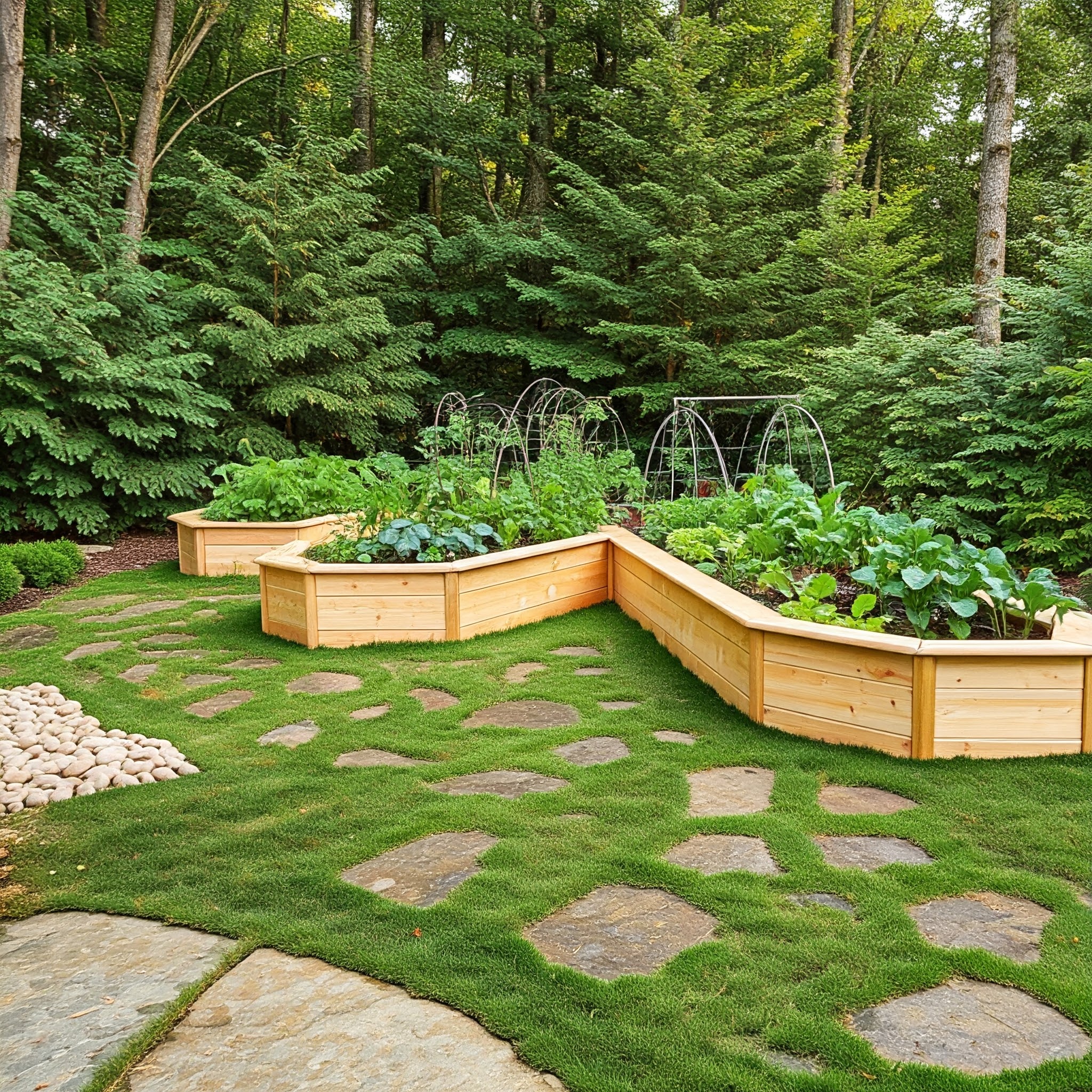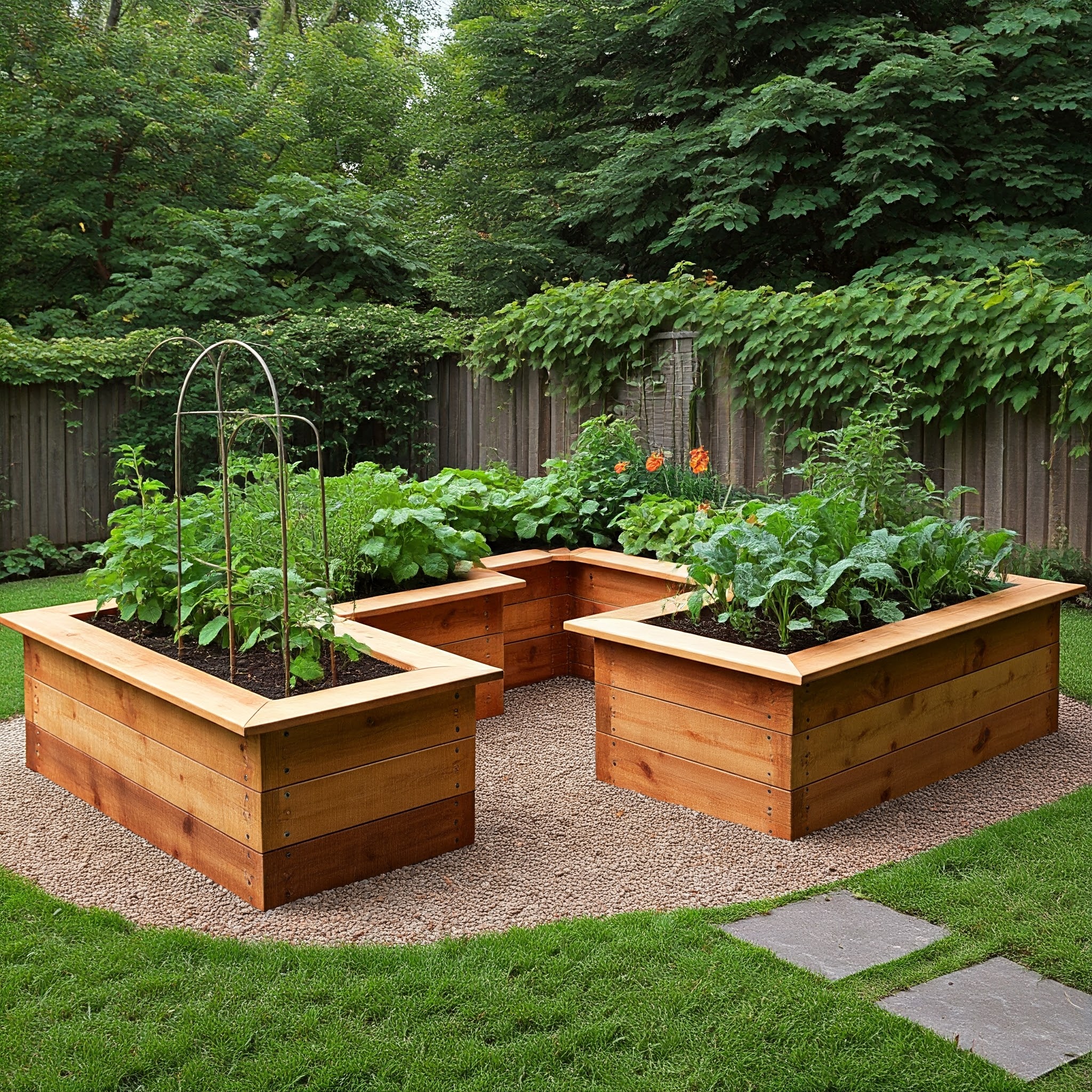
Easy DIY U-Shaped Garden Bed Plans for a Stunning Backyard
In this article, we will discuss easy DIY U-shaped garden bed plans that will help you create a stunning backyard. These plans are simple to follow and will add a touch of beauty to your outdoor space. Whether you are a seasoned gardener or just starting out, these U-shaped garden beds are a great way to enhance your landscaping and grow a variety of flowers, vegetables, and herbs.
What are the benefits of U-shaped garden beds?
U-shaped garden beds offer several advantages for your backyard. Firstly, their unique shape allows for efficient use of space, making it easier to plant and maintain a variety of crops. The inward curve of the bed also provides better access to the plants from all sides, making it easier to tend to them without trampling the soil.
Additionally, the raised design of U-shaped garden beds helps improve drainage and prevents soil compaction, leading to healthier plants and better yields.
Furthermore, the aesthetically pleasing shape of U-shaped garden beds adds visual appeal to your backyard, creating a focal point that can enhance the overall design of your outdoor space. These beds can be customized to fit any size or shape of the garden, making them a versatile and attractive option for both small and large yards.

How to build a U-shaped garden bed?
Building a U-shaped garden bed is a simple and rewarding DIY project that can be completed in a weekend. To start, you will need to gather the necessary materials, including lumber, screws, and a saw. Choose a location in your yard that receives ample sunlight and is easily accessible for watering and maintenance.
Begin by measuring and cutting the lumber to create three equal-length sides of the U shape, ensuring that the corners are square. Assemble the sides by attaching them together with screws, forming the U-shaped bed. Place the bed in your desired location, ensuring that it is level and secure.
Fill the bed with a nutrient-rich soil mix and plant your favorite flowers, vegetables, or herbs to complete your U-shaped garden bed.

What plants are best suited for U-shaped garden beds?
U-shaped garden beds are versatile and can accommodate a wide range of plants. For vegetable gardens, popular options include tomatoes, peppers, cucumbers, and lettuce. Herbs such as basil, parsley, and mint also thrive in U-shaped beds, providing fresh flavors for cooking and garnishing. Additionally, flowers like marigolds, petunias, and zinnias add a burst of color and beauty to your garden beds.
When selecting plants for your U-shaped garden bed, consider factors such as sunlight exposure, soil type, and water requirements to ensure the health and vitality of your plants. Mixing and matching different types of plants can create a visually appealing and diverse garden that attracts beneficial insects and pollinators.

How to maintain a U-shaped garden bed?
Maintaining a U-shaped garden bed is relatively easy and requires regular care to ensure the health and productivity of your plants. Watering is essential, especially during hot and dry periods, to keep the soil moist and nourished. Mulching around the plants can help retain moisture, suppress weeds, and improve soil quality.
Regular pruning, weeding, and fertilizing are also important tasks to keep your U-shaped garden bed in top condition. Removing dead or diseased plants, as well as controlling pests and diseases, can prevent the spread of problems and promote plant growth. Taking the time to care for your garden bed will result in a bountiful harvest and a beautiful backyard display.

Conclusion
Creating a stunning backyard with easy DIY U-shaped garden bed plans is a rewarding and enjoyable project for any gardener. The benefits of U-shaped garden beds, including efficient use of space, improved drainage, and visual appeal, make them a popular choice for enhancing outdoor landscapes.
By following simple steps to build and maintain your U-shaped garden bed, you can grow a variety of plants and create a beautiful outdoor oasis for relaxation and enjoyment.

FAQs
Can U-shaped garden beds be customized to fit smaller spaces?
Yes, U-shaped garden beds can be easily adapted to fit smaller spaces by adjusting the dimensions of the lumber used for the sides. You can also create a mini U-shaped bed by scaling down the size to accommodate limited space while still enjoying the benefits of this design.
What are the advantages of using raised garden beds?
Raised garden beds, such as U-shaped designs, offer several advantages, including improved drainage, reduced soil compaction, and better access to plants for maintenance. The elevated beds also provide a barrier against pests and weeds, resulting in healthier plants and higher yields.
Can U-shaped garden beds be used for growing a vertical garden?
While U-shaped garden beds are traditionally designed for ground-level planting, they can be adapted for vertical gardening by adding trellises or climbing structures to support vining plants. Vertical gardening in U-shaped beds maximizes space and allows for the growth of vertical crops like beans, peas, and squash.
What is the best soil mix for U-shaped garden beds?
An ideal soil mix for U-shaped garden beds is a combination of topsoil, compost, and organic matter to provide nutrients and promote healthy plant growth. Adding perlite or vermiculite can improve drainage, while incorporating peat moss can retain moisture and improve soil structure.
How can I protect my U-shaped garden bed from wildlife and pests?
To protect your U-shaped garden bed from wildlife and pests, consider installing fences or barriers around the perimeter to deter animals from entering. Using natural repellents or companion planting techniques can also help to discourage pests from damaging your plants. Regular monitoring and maintenance of your garden bed can prevent infestations and ensure a thriving garden.
